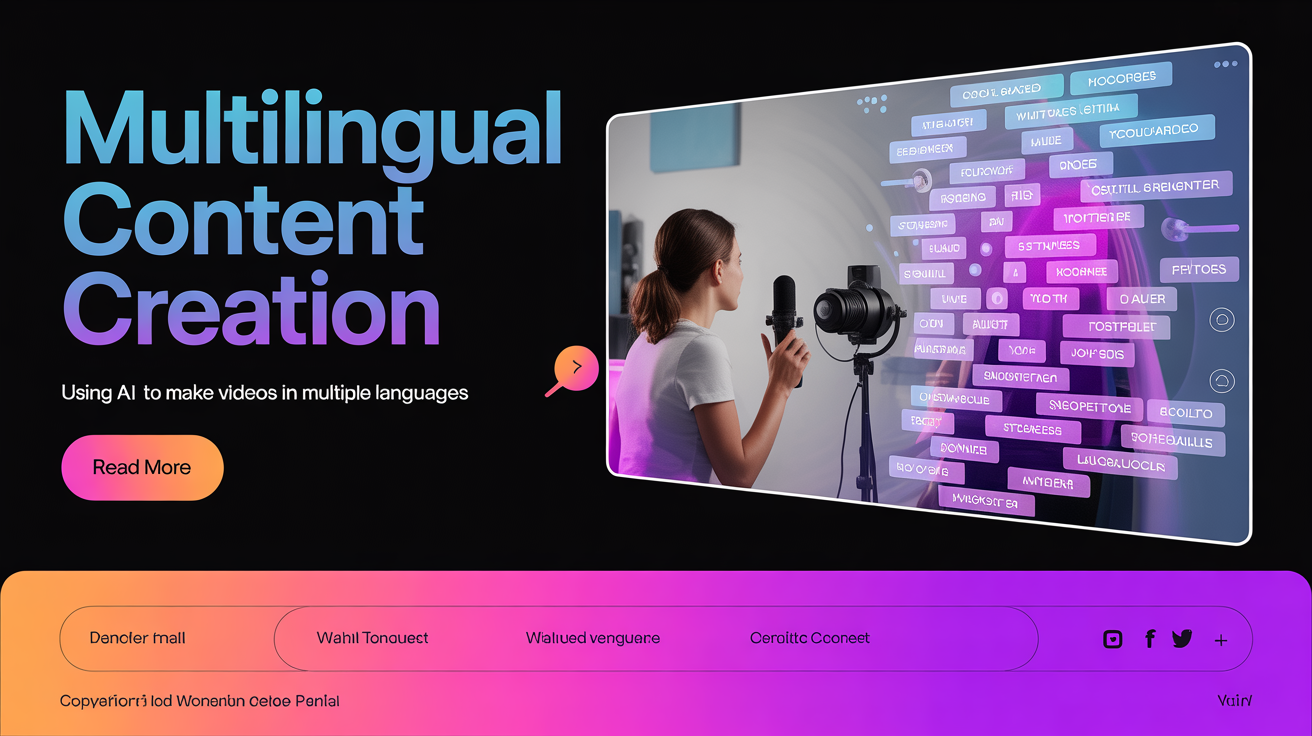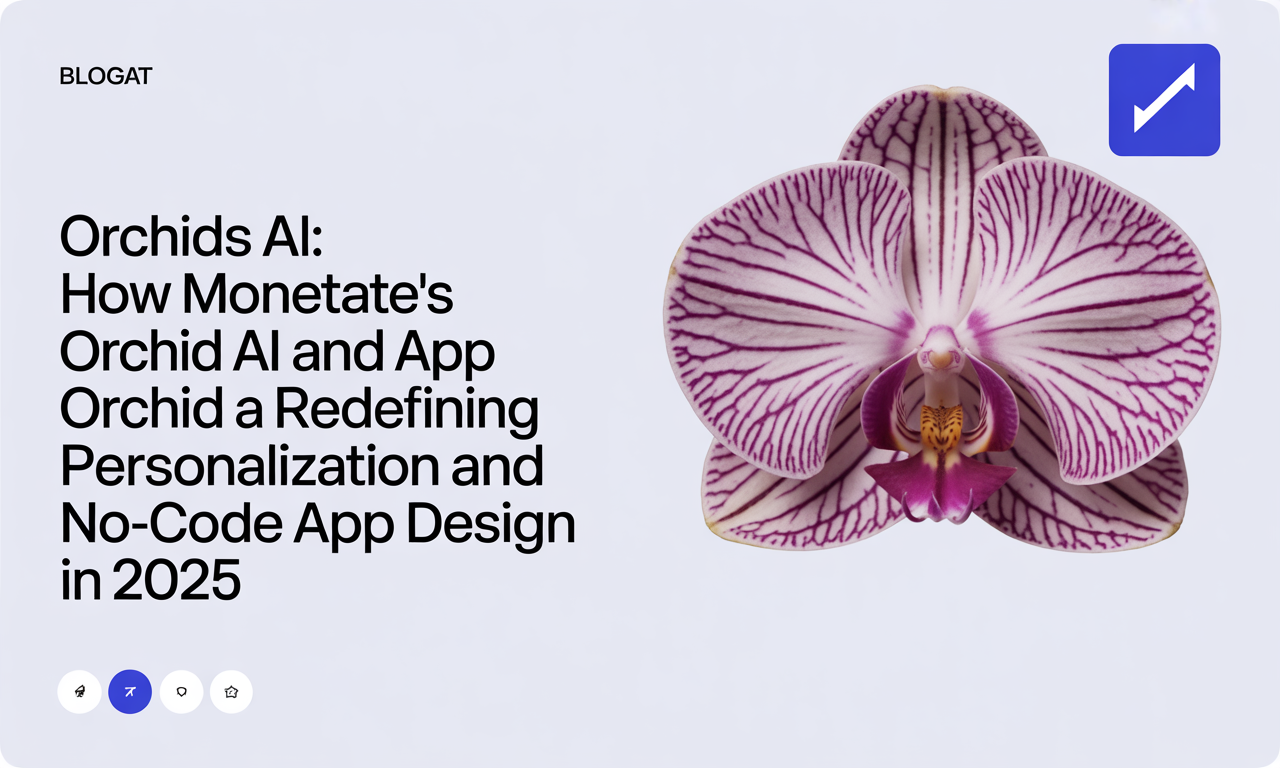Expand Your Reach: Multilingual Videos with AI
In the ever-evolving landscape of YouTube content creation, standing out and reaching a global audience is more crucial than ever. By 2025, the demand for multilingual content will be at an all-time high, with viewers craving content in their native languages. Enter AI-driven translation and voiceover tools, game-changers that enable creators to produce videos in multiple languages efficiently and effectively. Let's dive into how you can leverage these technologies to tap into new markets and grow your channel exponentially.
The Power of Multilingual Content
Creating multilingual content is no longer just an option; it's a necessity for creators aiming to go global. Here's why:
- Broader Audience Reach: Breaking down language barriers allows you to connect with a wider audience, increasing your subscriber base and view counts.
- Improved Engagement: Viewers are more likely to engage with content in their native language, leading to higher watch times, likes, and comments.
- Competitive Advantage: By offering multilingual content, you differentiate yourself from competitors who stick to a single language.
- SEO Benefits: YouTube's algorithm favors content that appeals to a global audience, boosting your visibility in search results.
AI Translation Tools: Bridging Language Gaps
AI translation tools have come a long way, offering accurate and contextually appropriate translations that were once unimaginable. Here's how to leverage them for your videos:
Choosing the Right Translation Tool
With numerous options available, selecting the right tool is paramount. Consider the following factors:
- Language Support: Ensure the tool supports the languages you intend to target.
- Accuracy: Look for tools that offer high translation accuracy and context awareness.
- Integration: Choose tools that seamlessly integrate with your video editing software.
- Cost: Evaluate pricing plans to find one that fits your budget.
Best Practices for AI Translation
To make the most of AI translation tools, follow these best practices:
- Simplify Your Script: Use clear and concise language to improve translation accuracy.
- Avoid Idioms and Slang: These can be challenging for AI to translate accurately.
- Review Translations: Always review AI-generated translations to ensure context and cultural appropriateness.
- Use Consistent Terminology: Maintain consistency in terminology to build a strong brand identity across languages.
AI Voiceover Tools: Breathing Life into Translations
AI voiceover tools bring your translated scripts to life, offering natural-sounding voices in multiple languages. Here's how to use them effectively:
Selecting the Perfect Voice
The right voice can make or break your multilingual content. Consider the following when choosing an AI voiceover tool:
- Voice Quality: Opt for tools that offer high-quality, natural-sounding voices.
- Language and Accent Variety: Ensure the tool provides a range of languages and accents to cater to diverse audiences.
- Customization: Look for tools that allow you to adjust voice speed, pitch, and emphasis for a more personalized touch.
- Integration: Choose tools that easily integrate with your video editing software for a seamless workflow.
Enhancing Voiceovers with Human Touch
While AI voiceovers have improved significantly, adding a human touch can enhance their quality:
- Emotional Inflection: Manually adjust voiceovers to include emotional inflection, making the content more engaging.
- Pacing and Pausing: Control the pacing and pausing of voiceovers to mimic natural speech patterns.
- Background Music and Sound Effects: Integrate background music and sound effects to create a more immersive viewing experience.
Streamlining Your Multilingual Workflow
Creating multilingual content can be daunting, but with the right workflow, you can streamline the process and save time. Here's a step-by-step guide:
Pre-production: Planning and Scripting
- Identify Target Languages: Determine which languages you want to target based on your audience demographics and market research.
- Create a Master Script: Write a clear and concise script in your primary language, ensuring it's easy to translate.
- Prepare for Translation: Simplify complex sentences, avoid idioms, and use consistent terminology.
Production: Translating and Voiceover
- Translate Scripts: Use AI translation tools to translate your scripts into target languages. Review and edit translations for accuracy and context.
- Generate Voiceovers: Input translated scripts into AI voiceover tools and generate voiceovers in target languages.
- Review and Edit Voiceovers: Listen to generated voiceovers and make necessary adjustments for emotional inflection, pacing, and pausing.
Post-production: Editing and Publishing
- Sync Voiceovers with Video: Import voiceovers into your video editing software and sync them with the video footage.
- Add Subtitles and Captions: Generate subtitles and captions in target languages using AI tools or manual creation.
- Publish and Promote: Upload your multilingual videos to YouTube, optimize titles, descriptions, and tags for each language, and promote them on relevant platforms.
Overcoming Challenges in Multilingual Content Creation
While AI tools significantly simplify multilingual content creation, challenges may arise. Here's how to overcome them:
- Cultural Nuances: Work with native speakers or cultural consultants to ensure your content resonates with target audiences.
- Technical Issues: Stay updated with the latest AI tools and technologies to minimize technical glitches.
- Quality Control: Maintain a high standard of quality by reviewing and editing translations and voiceovers thoroughly.
- Audience Engagement: Monitor viewer feedback and make necessary adjustments to improve engagement and satisfaction.
Conclusion
Embracing multilingual content creation is no longer an option but a necessity for YouTube creators aiming to reach a global audience. By leveraging AI translation and voiceover tools, you can efficiently produce high-quality videos in multiple languages, expanding your reach and engagement.
Start by identifying your target languages and simplifying your scripts for easy translation. Choose the right AI tools that offer high accuracy, natural-sounding voices, and seamless integration. Streamline your workflow from pre-production to post-production, and don't forget to add a human touch to enhance the quality of your voiceovers.
Overcome challenges by staying updated with the latest technologies, working with native speakers, and maintaining high-quality standards. With these strategies in place, you'll be well on your way to creating compelling multilingual content that resonates with audiences worldwide.
So, what are you waiting for? Dive into the world of multilingual content creation and watch your YouTube channel grow like never before!



